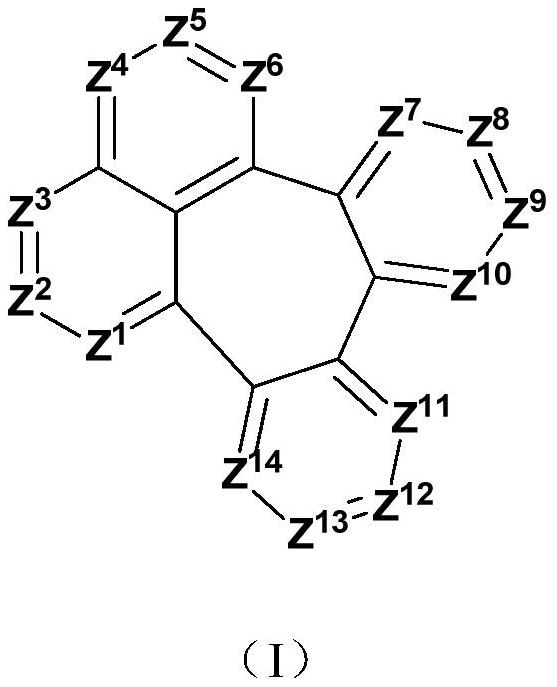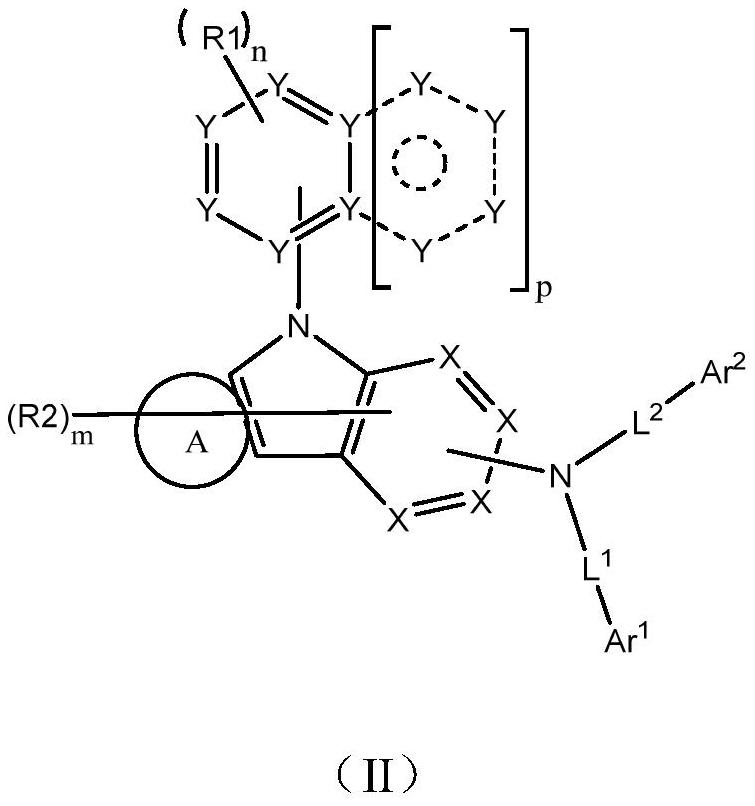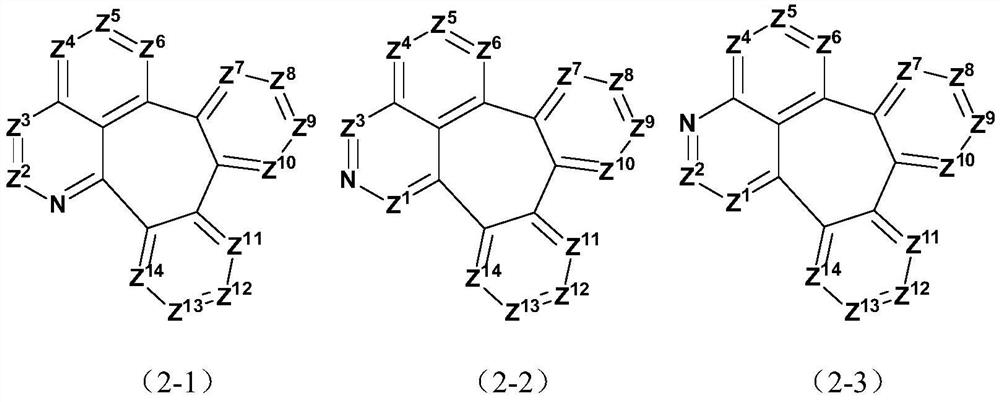Organic light-emitting device
An electroluminescent device, an organic technology, applied in the direction of electric solid state devices, electrical components, semiconductor devices, etc., can solve the problems of large energy level difference, low device efficiency, and poor life.
- Summary
- Abstract
- Description
- Claims
- Application Information
AI Technical Summary
Problems solved by technology
Method used
Image
Examples
Synthetic example 1
[0065] Synthesis of Compound P1
[0066]
[0067] M (30mmol), 7H-benzocarbazole (30mmol), sodium tert-butoxide (40mmol), tris(dibenzylideneacetone) dipalladium (1%), tri-tert-butylphosphine (2%), toluene 200ml was added to the reaction flask, heated to 120°C for 6 hours, TLC monitored the completion of the reaction, after cooling down, water and dichloromethane were added for extraction, the organic phase was concentrated and recrystallized from toluene to obtain compound P1.
Synthetic example 2
[0069] Synthesis of Compound P2
[0070] Add M (0.1mol), p-chlorophenylboronic acid (0.12mol), potassium carbonate (0.2mol), dioxane (150ml), tetrakis(triphenylphosphine)palladium (1%), and water 30ml into the reaction flask , heated to 80° C. for 5 h, and TLC monitored the completion of the reaction. After cooling down, a large amount of solids precipitated, filtered, and the filter cake was washed with ethanol and dried to obtain intermediate M2.
[0071] M2 (30mmol), 7H-benzocarbazole (30mmol), sodium tert-butoxide (40mmol), tris(dibenzylideneacetone) dipalladium (1%), tri-tert-butylphosphine (2%), toluene 200ml was added to the reaction flask, heated to 120°C for 6 hours, TLC monitored the completion of the reaction, after cooling down, water and dichloromethane were added for extraction, the organic phase was concentrated and recrystallized from toluene to obtain compound P2.
Synthetic example 3
[0073] Synthesis of Compound P11
[0074] The method is the same as that in Synthesis Example 2, except that 7H benzocarbazole is replaced by an equivalent amount of carbazole to obtain compound P11.
PUM
| Property | Measurement | Unit |
|---|---|---|
| Thickness | aaaaa | aaaaa |
Abstract
Description
Claims
Application Information
 Login to View More
Login to View More - R&D
- Intellectual Property
- Life Sciences
- Materials
- Tech Scout
- Unparalleled Data Quality
- Higher Quality Content
- 60% Fewer Hallucinations
Browse by: Latest US Patents, China's latest patents, Technical Efficacy Thesaurus, Application Domain, Technology Topic, Popular Technical Reports.
© 2025 PatSnap. All rights reserved.Legal|Privacy policy|Modern Slavery Act Transparency Statement|Sitemap|About US| Contact US: help@patsnap.com



